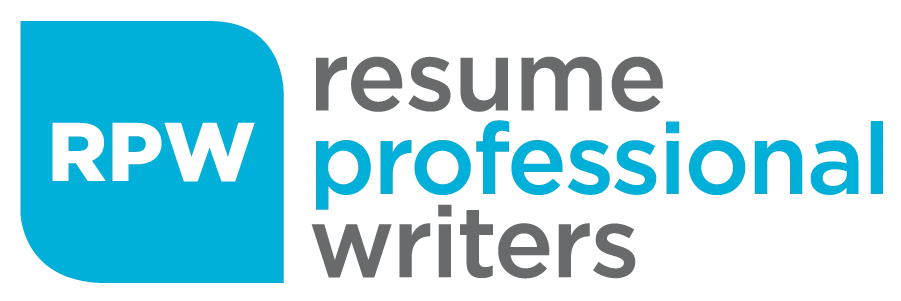Strategic thinking isn’t just for CEOs and military commanders—it’s a vital skill for anyone who wants to make better decisions, plan for the future, and rise above short-term distractions in their career. Whether you’re a student planning your next move, a mid-level employee aiming for leadership, or an entrepreneur trying to outmaneuver competition, strategic thinking gives you a lasting edge.
In this guide, we’ll break down what strategic thinking really means, why it’s essential in today’s fast-moving world, and how you can master it. You’ll also see real-life examples, practical tools, and even how to position it on your resume to get noticed by employers and hiring managers.
Let’s dive into the mindset that separates reactive workers from visionary leaders.

What Is Strategic Thinking?
Strategic thinking is the ability to see the big picture, connect the dots, and plan for the future based on a deep understanding of your current situation. It means analyzing opportunities and threats, understanding patterns and trends, and making intentional, long-term decisions instead of reacting emotionally or impulsively.
Key Components of Strategic Thinking:
- Vision: Knowing where you want to go and why.
- Planning: Creating a roadmap to reach your goals.
- Analysis: Examining data and insights to make informed choices.
- Prioritization: Focusing on what matters most and eliminating distractions.
- Foresight: Anticipating future developments or risks.
Strategic vs. Tactical Thinking
| Aspect | Strategic Thinking | Tactical Thinking |
|---|---|---|
| Timeframe | Long-term (months/years) | Short-term (days/weeks) |
| Focus | Vision, trends, goals | Execution, tasks, optimization |
| Goal | Future growth and sustainability | Immediate performance and delivery |
| Example | Planning to expand into a new market | Launching a local marketing campaign |
Strategic thinking sets the direction, while tactical thinking ensures you get there efficiently. Both are necessary, but strategy gives meaning to your actions.
Why Strategic Thinking Matters in Any Career
You don’t need a “strategist” title to think strategically. Regardless of your role, strategic thinking helps you:
1. Make Better Decisions
Instead of jumping into tasks blindly, strategic thinkers weigh options and anticipate outcomes, reducing costly mistakes.
2. Increase Your Value to Employers
According to a PwC survey, 77% of CEOs say they struggle to find employees with strategic thinking skills. Being someone who can look beyond daily tasks makes you stand out. Strategic thinking allows you to prove your value to employers by demonstrating your readiness for greater responsibilities.
3. Lead and Inspire Others
Strategic thinkers help teams understand why they’re doing something—not just how. Leading teams through this strategic clarity is essential for effective guidance and successful implementation. This clarity boosts morale, engagement, and direction.
4. Adapt to Change
In times of disruption (like during the pandemic or AI transition), strategic thinkers are more likely to pivot with purpose instead of panic. Effectively managing organizational change is crucial in these moments, ensuring that leadership and teams can navigate transitions strategically.
5. Stay Relevant
Strategic thinkers constantly scan the horizon. They anticipate shifts in their industry, upskill early, and stay ahead of trends. They also learn from the past, using previous experiences to inform their strategies and remain relevant.
Key Strategic Thinking Skills You Need
Let’s look at the most valuable skills that make up strategic thinking:
Analytical Thinking
Breaks complex problems into smaller parts. Look for patterns, data, and logic.
Problem-Solving
Strategic thinkers identify root causes and propose innovative, lasting solutions.
Forecasting
Involves making educated predictions based on trends, history, and data.
Prioritization
Focuses efforts and resources on what will create the biggest impact long-term.
Decision-Making
Evaluates options by considering both short-term risks and long-term effects.
Communication
Clearly articulates ideas and rationale behind decisions to gain buy-in and collaboration.
How to Develop Strategic Thinking Skills
Like any skill, strategic thinking can be cultivated with effort and intention. Here’s how to start:
1. Ask “What if?” Questions
Train yourself to explore scenarios beyond the obvious. Ask:
- What if this approach fails?
- What if a new competitor enters the market?
- What if we doubled our customer base?
2. Practice SWOT Analysis
SWOT (Strengths, Weaknesses, Opportunities, Threats) helps you assess situations comprehensively—be it for a project, job change, or business plan.
3. Reflect Regularly
After finishing a project or task, ask:
- What worked well?
- What could be improved next time?
- How did this contribute to long-term goals?
4. Consume Diverse Content
Read books, case studies, or articles outside your industry. Strategic thinking thrives on cross-disciplinary knowledge.
5. Learn from Mentors and Leaders
Talk to those who make strategic decisions. Watch how they approach problems or design long-term plans.
6. Zoom Out Often
When caught in the details, take a step back. Look at how the pieces fit into the larger goal or mission.
Examples of Strategic Thinking at Work
Strategic thinking manifests differently across roles. Here are real-life examples:
- Product Manager: Delays launching a feature to study user behavior trends and avoid poor UX later.
- Marketing Specialist: Shifts campaign focus based on predicted seasonal shifts in buyer behavior.
- Operations Head: Restructures supply chain partnerships to avoid future geopolitical disruptions.
- Team Leader: Anticipates team burnout and redesigns workflows ahead of time to maintain performance.
These decisions are not just smart—they’re intentional, scalable, and tied to future outcomes.
Strategic Thinking for Leaders and Managers
For professionals in leadership roles, strategic thinking becomes mission-critical.
Key Responsibilities Involving Strategic Thinking:
- Setting Vision and Goals: Mapping business objectives for 1, 3, or 5 years.
- Risk Management: Planning for downturns, delays, or disruptions.
- Opportunity Analysis: Identifying areas for growth—be it new markets, customer segments, or partnerships.
- Team Alignment: Ensuring every team member knows how their tasks support the bigger picture.
Leaders who think strategically foster resilience, innovation, and trust in their organizations.
Strategic Thinking in Resume and Interviews
Don’t just say “strategic thinker” on your resume—show it with real results.
Resume Tips:
- Instead of: “Strategic thinker with 5 years of experience”
- Write: “Devised a market entry strategy that increased sales by 40% in one year.”
Interview Example (STAR Format):
Situation: “We were facing declining engagement across digital channels.”
Task: “I needed to reverse the trend and re-engage our audience.”
Action: “I led a cross-functional audit and implemented a content strategy tied to long-term behavioral data.”
Result: “This led to a 65% increase in engagement within six months.”
Common Myths and Mistakes About Strategic Thinking
Even ambitious professionals sometimes misinterpret strategic thinking. Let’s clear up some myths:
“It’s only for executives.”
Strategic thinking is beneficial at every level, even for interns. It’s about how you think, not your job title.
“You need years of experience.”
It’s not about age or experience—it’s about perspective and decision-making habits.
“Planning is the same as strategy.”
Planning is how you execute. Strategy is why and what to focus on.
“Strategy is rigid.”
On the contrary, effective strategic thinking is adaptable. It involves recalibrating as new data or obstacles arise.
Strategic Thinking Tools You Can Use
Here are some practical tools that support strategic thinking:
- SWOT Analysis – For identifying strengths, weaknesses, opportunities, and threats.
- PESTLE Analysis – For understanding external factors like political, economic, and legal conditions.
- Balanced Scorecard – To align goals across departments.
- Eisenhower Matrix – Helps prioritize tasks by urgency and importance.
- Mind Mapping Software – Like Miro or XMind, to visualize and structure ideas.
Use these tools regularly and you’ll start thinking strategically by default.
Future-Proofing Your Career with Strategic Thinking
Strategic thinkers are among the most in-demand professionals across all sectors. As AI and automation take over repetitive tasks, the ability to think big, plan smart, and act with intention becomes a key differentiator.
Why It Matters in 2025 and Beyond:
- Jobs are evolving faster than ever—strategic thinkers adapt faster.
- Businesses value long-term thinkers who prevent future problems, not just solve current ones.
- Strategic minds are essential in leadership pipelines and innovation teams.
In essence, strategic thinking isn’t just a skill. It’s your career insurance.
Start Thinking Bigger: Apply Strategic Thinking Today
Strategic thinking is not reserved for a chosen few. It’s a skill you can build with curiosity, intention, and practice. Whether you’re planning your next project or pivoting your career, the ability to zoom out, analyze deeply, and make informed decisions will set you apart from your peers.
Take a moment now: What decision are you facing that could benefit from more strategic thought? Write it down. Break it into parts. Explore the long-term impact.
Ready to showcase your strategic thinking on your resume? Let our professional resume writers help you craft a document that gets results.








